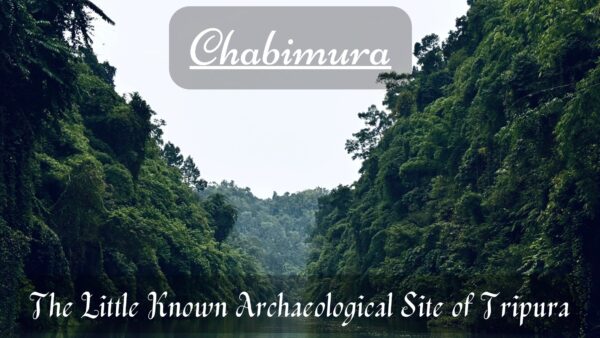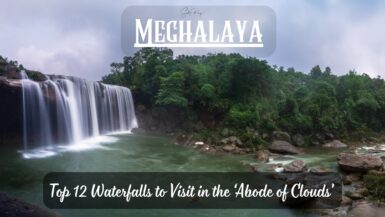Chabimura is an astonishing archaeological site of Tripura, which demonstrates the unique cultural and tribal heritage of northeastern India. In fact, India’s northeast is teeming with distinctive places that give visitors an out-of-the-world experience. Chabimura is home to a series of extraordinary rock-cut carvings of Hindu divinities, engraved on the hills that line the banks of the Gomati River. Hidden amidst an impenetrable jungle, these sculptures provide insight into the religious beliefs and practices of the people who once lived in this region. They have remained largely unexplored and unknown outside the boundaries of Tripura. However, they deserve to be brought to the forefront of mainstream tourism as these panels form an essential part of Indian history and heritage.
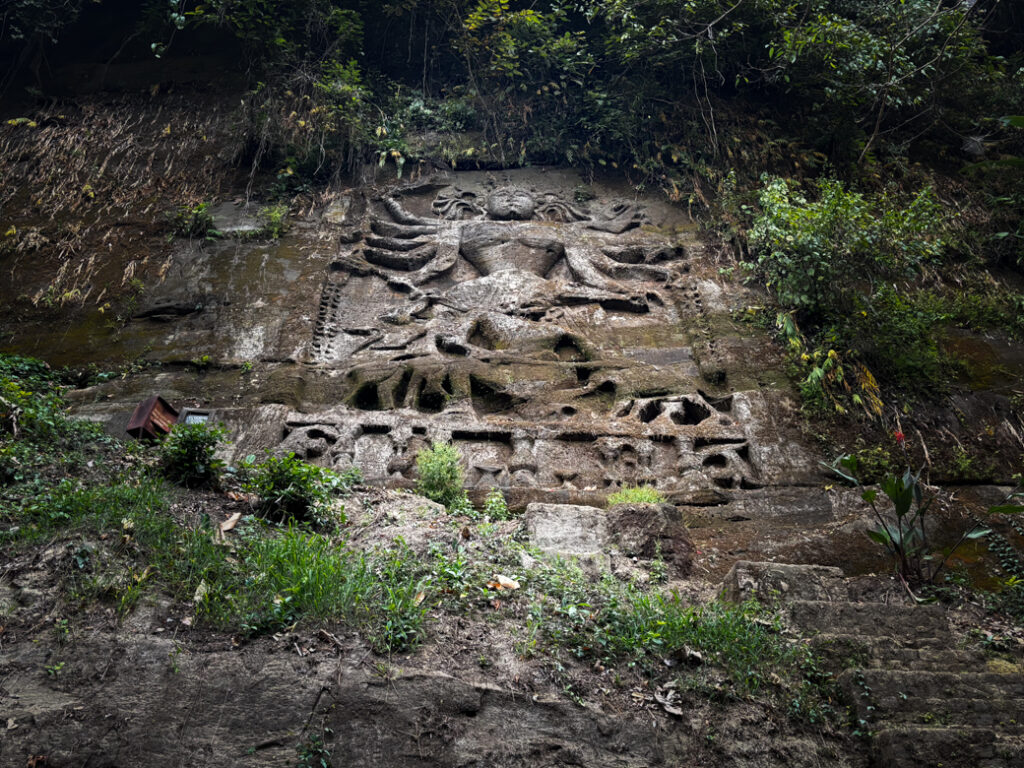
Table of Contents
What is Chabimura:
The word ‘Chabimura’ literally translates to ‘hill of pictures’ (in local dialect, ‘Mura’ means hill). This place is also called Devatamura or ‘hill of gods’. Chabimura is replete with panels of rock-cut sculptures on the steep slopes of the hills. The most stunning carvings belong to Mahisasuramardini, known locally as Chakrak Ma. While some scholars date the rock carvings to the 8th century, some argue that they belong to the 11th – 12th centuries. A few others opine that they were sculpted in the 15th century.
Why you need to visit Chabimura:
Like Unakoti, Chabimura is an enigma in itself. In a way, Chabimura appears even more mysterious when compared to Unakoti. Unakoti has an accepted history at least. However, in the case of Chabimura, no one can pinpoint who carved these sculptures or how they were chiselled on the steep and slippery hills. Although, it can safely be presumed that a culture worshipping the Mother Goddess thrived in this region in the old days.

The Gomati River is the architect of the surreal landscape of Chabimura, which is as attractive as the carvings. The hills, on which the rock-cut sculptures are engraved, stand tall on the banks of the gentle river. The hills are covered with impenetrable forests of sky-kissing trees and bamboo groves. The shadow of this lush forest has painted the water of the Gomati River in shades of green. The mechanical sound of the motorboat is undermined by the rhythmic rippling of the river, the cacophony of birds, and the rustling of trees. Unblemished by the human presence, the ambience of the Chabimura is truly out of this world.
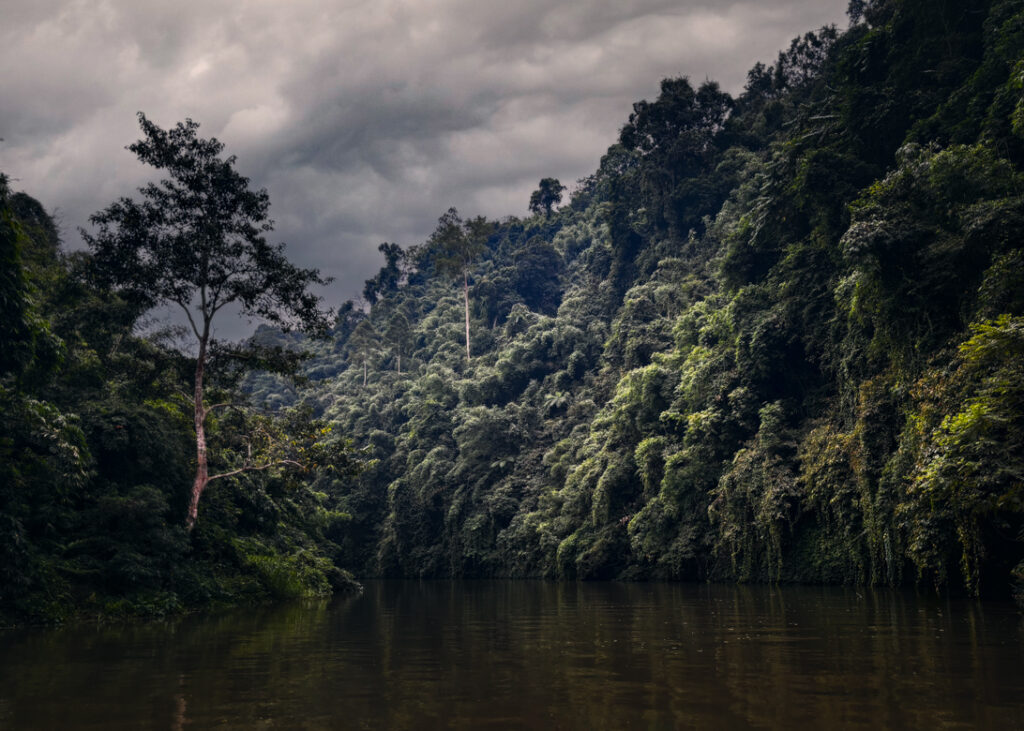
What to see in Chabimura:
The boat ride across the Gomati River is an experience in itself. It feels as if the boat is meandering through the Amazon Rainforest. In fact, Chabimura is often termed as the Amazon of Tripura.
In total, there are as many as 50 rock carvings in Chabimura. The first panel is a sculpture of Pancha Devata. It consists of deities belonging to the Hindu pantheon such as Siva, Vishnu, Karthikeya, Ganesa, and Shakti. They are portrayed along with their ‘vahanas’.

Next comes a smaller but elaborate panel depicting a queen sitting in a palanquin, followed by an entourage of singers and dancers.

Further downstream, there is a carving of Siva riding his bull, Nandi, and a ‘Damaru’ in his hand. It is called Brishavahana Siva.
Lastly, there is the colossal 13-metre-high rock-cut sculpture of Chakrak Ma. It represents Durga as the slayer of the buffalo demon Mahisasura. The Goddess has 10 hands, with her right leg pressed firmly on the Asura as she subdues him, and her left leg placed on her vahana, the lion. Her hair fans her face. A closer look reveals that her hair is snakes emanating from her head. This feature of Chakrak Ma is akin to Medusa of Greek lore.

The boat stops here so that visitors can climb a few steep stairs to reach Chakrak Ma and pay their respects to her.
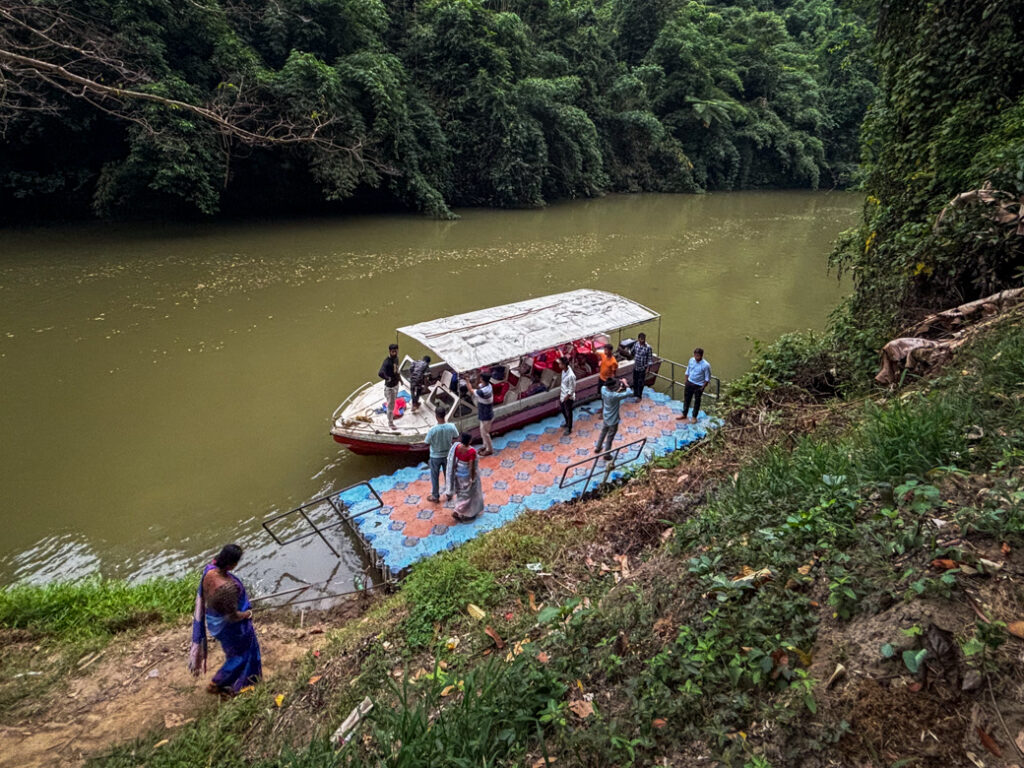
While returning, the boat once again halts to explore the cave of Chabimura. According to local Jamatia legend, King Chichingfa had gathered all his treasures in a wooden chest and hidden them somewhere inside the cave. The treasure is said to be guarded by a huge python. The local tribal people believe that the cave is divinely protected and therefore should not be entered by mere mortals. Those who try to enter the cave to steal the treasure shall face the wrath of Chakrak Ma.
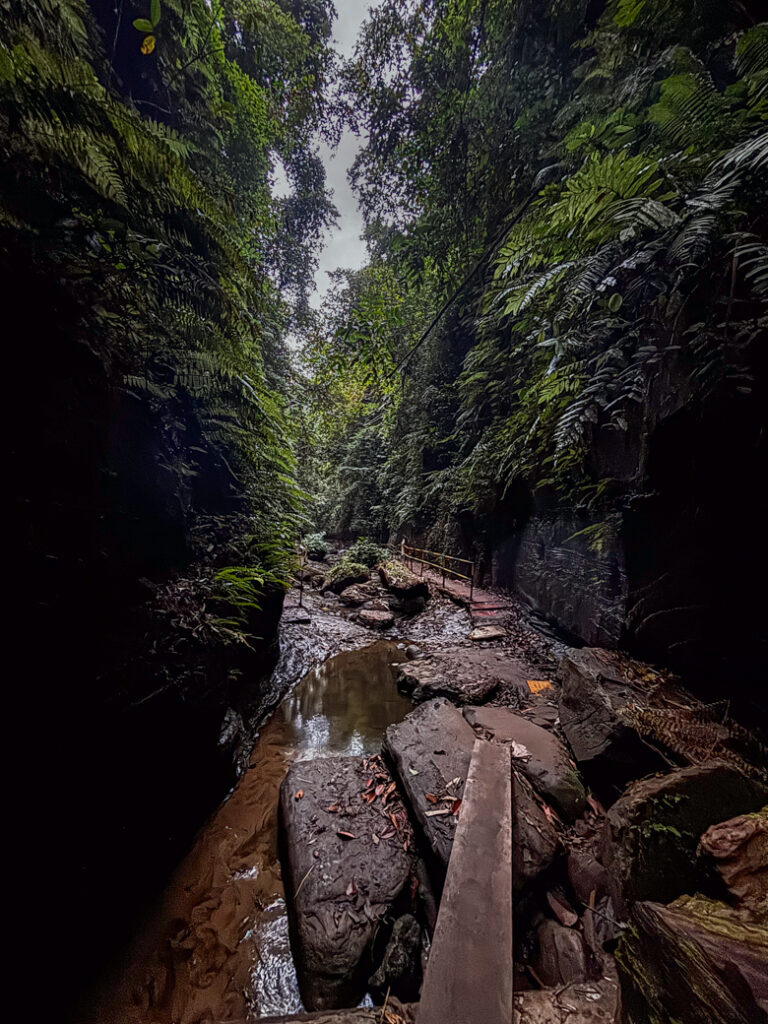
A narrow road along with a few steep, makeshift stairs leads towards the cave. A stream of waterfalls will accompany you up to the cave. Since the area is covered in dense forest, sunlight does not seep through here. Hence, the area is damp and dusky, while the path is slippery. You need to watch your step carefully here.

The exceptional rock carvings at Chabimura testify to the artistic capabilities of the local artisans. They also represent the ancient civilization that once flourished in this region.

Important FAQs:
Where is Chabimura located?
Chabimura is located on the bank of the Gomati River at Haakwchak near Amarpur. It lies at a distance of 82 km from the capital city of Agartala and 30 km from Udaipur.
How can I reach Chabimura?
Chabimura can be reached from Udaipur by travelling through the picturesque Udaipur – Amarpur highway. It is convenient to hire a car to reach the Chabimura rock carvings since it lies in an interior village some 10 km away from Amarpur.
Otherwise, you can take a bus from Udaipur to reach Amarpur. From Amarpur, you can hire a ‘toto’ to reach the archaeological site.
As for us, we hired a car from Matabari and visited Chabimura along with Damboor Lake as a day trip.
What is the best time to visit Chabimura?
October to March is the best time to explore the caves and carvings of Chabimura. Avoid the monsoon as the river turns furious due to the heavy rainfall. The caves also become inaccessible during this time.
Where can I stay in Chabimura?
You can book a stay at Sagarika Parjatan Niwas near the Fatik Sagar Lake in Amarpur.
Where can I eat in Chabimura?
You won’t find any eateries at Chabimura. However, a few roadside stalls are available at Amarpur where you will find parathas, chowmein, fried rice, and chicken and pork items.
How can I travel to Chabimura?
Motor boats are the only option for braving the Gomati River in Chabimura. Boat rides are available till 4 PM. The ride costs INR 150 per head. The boats don’t leave until all the seats are booked. Generally, 10-15 passengers are accommodated in one motor boat.
You can also hire an entire boat for yourself. This will cost you INR 3000.
Try reaching the boating counter early, as the number of tourists decreases with time. As mentioned earlier, the boats will not leave unless they are fully occupied.
What are the other nearby attractions?
You can visit the beautiful Damboor Lake, which is the source of the Gomati River and is situated around 60 km away from Amarpur town.
